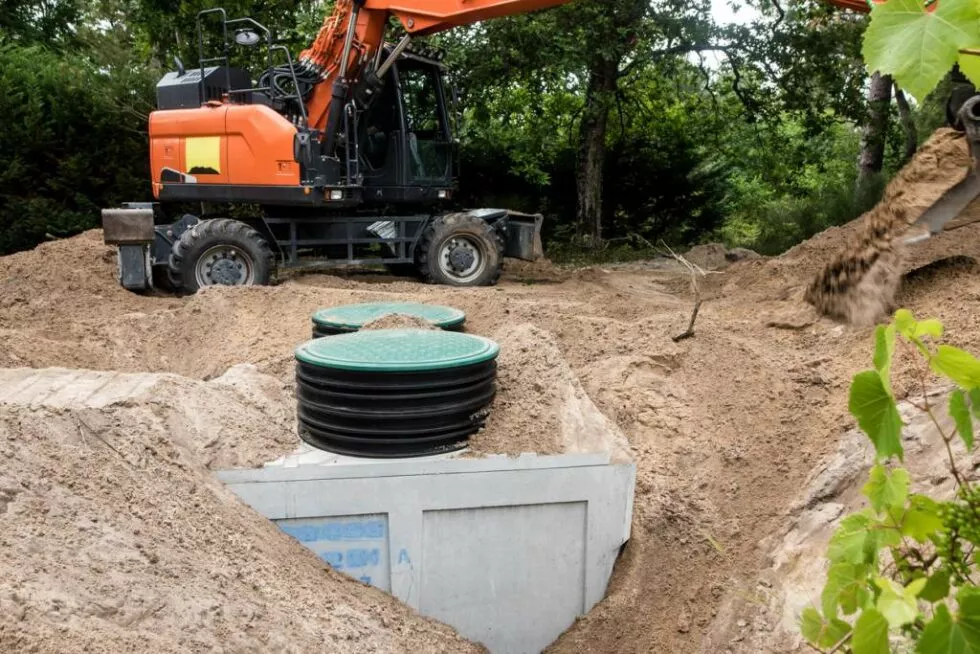Price of an individual micro-treatment plant: the comparison
When you buy a new house or renovate an existing one, it is often necessary to acquire a new individual sanitation system. Installing a micro-treatment plant at the best price is based on a good comparison of prices. Follow this advice from Aquatiris to find out what to consider in order to assess the prices offered for a micro-treatment plant.
Factors influencing the price of a micro-treatment plant
To compare the prices of an approved individual micro-treatment plant, you need to know the main determining factors.
The type of individual micro-treatment plant
Micro-treatment plants represent a market share of around 1 billion euros and are the most advanced technology among individual treatment systems. These wastewater treatment systems come in several models with slight differences. The micro-treatment plant with activated or free sludge treats wastewater with bacteria that are sludge solvents. Its price varies between 6500 and 9500 euros, including installation.
There is a second variant of this system called a fixed sludge micro-treatment plant. Unlike the previous model, the fixed cultivation does not leave the bacteria free in the water. They are fixed to a fixed or mobile support. This allows them to better withstand load differences. If a professional includes this product in their quote, this micro-station is a little more expensive. Its price varies between 7500 and 10,500 euros. One of its advantages is that it generates less sludge, which considerably reduces the costs associated with emptying.
The individual micro-treatment plant without electricity is a non-collective sanitation (NCS) system suitable for land not connected to the mains drainage system. This device includes an all-water septic tank and a compact stand-alone filter. This filtering bed, usually made of sand or coconut fibre, is impregnated with enzymes and bacteria. The installation of an individual micro-treatment plant without electricity costs at least 8000 euros without labour.
The SBR (Sequencing Batch Reactor) treatment device is a non-collective sanitation plant with the same properties as the free sludge model. Only a very fine electronic mechanism is added to this system.

The number of inhabitants in the house
The number of people living in your house is a determining factor in the cost of an individual micro-treatment plant for polluted water. The capacity of the device must take into account the actual number of inhabitants in the home. In sanitation jargon, we talk about population equivalent (PE) which refers to the potential number of occupants in a house. The higher the PE, the more you will need a high-capacity micro-station, which is therefore expensive.
Specifically, we consider 1 PE per main room (bedroom or living room over 7m² with a window). If your house has 4 main rooms, for example, the individual treatment plant to be installed is for at least 4 PEs. You can go above the exact number of PEs. This gives you a sufficient margin in case the number of inhabitants in the house increases.
As a guide, a micro-station for 2 to 5 PEs costs between 9,000 and 11,000 euros, including installation. For 6 to 10 PEs, allow 12,000 to 14,000 euros for your individual treatment equipment. Prices rise to 21,000 euros when the micro-treatment plant is for more than 10 PEs.
For residences with a surface area of more than 80m², you must add one PE bracket for every additional 20m².
The cost of operating and maintaining the micro-treatment plant
To make a comparison of the prices of an individual micro-treatment plant, you must take into account the operating costs. The soil study , carried out by a professional or a specialised design office, costs between 600 and 800 euros. Some plots have specific features that require the installation of a lifting pump in the individual micro-treatment plant. This equipment sends the wastewater to the spreader. It also requires electricity to operate.
The air compressor injects oxygen into the water treatment tank. Although this expense is generally included in the price of individual micro-treatment plants, check to avoid surprises. Electrical connection equipment and accessories are often not included in the overall price of the water treatment device. That is why you must take this into account when comparing. They include the electrical panel, ducts, cables and fuses.
In addition to the operating costs, a good price comparison for a micro-treatment plant also includes the cost of maintenance. Maintenance is often carried out twice a year and costs between 150 and 200 euros. Emptying the decantation tank is also mandatory and the frequency depends on the capacity of the basin.
As with a septic tank, emptying an individual micro-treatment plant costs 150 to 300 euros. Allow around 80 euros per year for electricity consumption.

